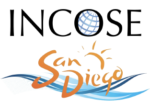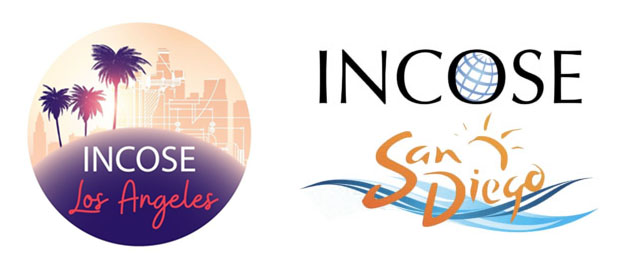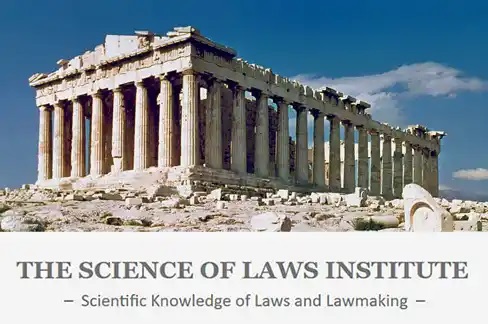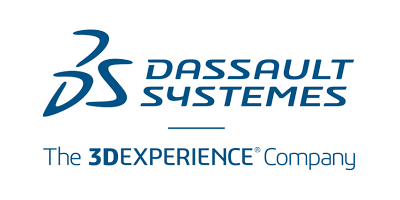2023 INCOSE San Diego/Los Angeles 1-Day Conference
Saturday, December 2nd, 2023
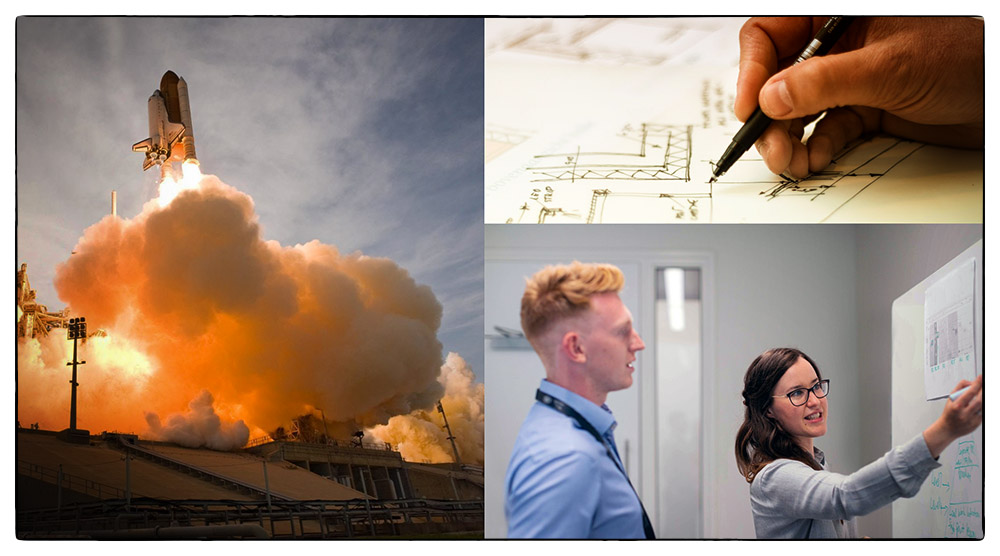
Saturday, Dec 2nd, 2023, In-Person 1-Day Conference!
This is the FIRST 1-day conference hosted by BOTH the San Diego and Los Angeles chapters! The event will be held at the Dassault Systemes Biovia Corp building in Sorrento Valley, San Diego (Dassault Systemes, maker of Cameo MBSE software, was kind enough to offer their space for the conference). This event includes 16 presentations, lunch, and lite breakfast.
Key Conference Information:
WHEN: Saturday, December 2nd, 2023, from 8:30 AM to 4 PM (presentations begin at 9am sharp)
LOCATION: Dassault Systemes Biovia Corp, 5005 Wateridge Vista Drive, San Diego, CA, 92121 (Google Maps)
CAPACITY: The conference location has a limit of 90 guests. Registration will be stopped at 90.
COST: INCOSE Members $40, Non-Members $70, Students/Presenters/Seniors (65+) $20. Same day registration shall be available, but with $10 surcharge. PLEASE REGISTER BY FRIDAY MORNING (8am) on Dec 1st to help us plan for the right number of Saturday breakfasts and lunches – thank you! Register
* Important – If you intend to sign up the day of, we also recommend that you check this registration page to see how many openings are left before you make the trip.
REFRESHMENTS: A continental breakfast as well as a lunch of sandwiches and drinks will be provided and are included in the registration fee (if you have a vegetarian preference, please state in the Note section while registering).
* Important – Please register in advance; we will order some extra lunches, but if you do not register by Friday morning there’s a chance you won’t get a lunch.



About the 1-Day Conference
Please join us! Back again, in-person only, the San Diego and Los Angeles chapters 1-day conference for 2023! This is a great way to kick off the holiday festivities: the day will include 15 enlightening SE presentations, plus the keynote What a Systems Engineer Should Know about Artificial Intelligence by Dr. Rick Hefner, .
In addition to the presentations, registration includes lunch and continental breakfast, free parking, and of course, networking with your fellow systems engineers from both the Los Angeles and San Diego areas!
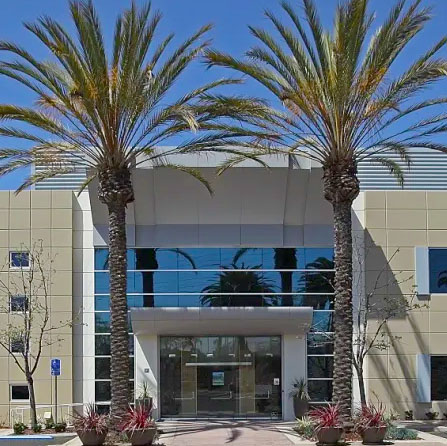

Dassault Systemes, Biovia Corp building, Sorrento Valley
San Diego State Aztec Council on Systems Engineering (ACOSE)
The conference will also include a brief introduction to ACOSE, the SDSU student division of the San Diego chapter. The introduction will be conducted by Ms. Emilia Cadenasso, President of ACOSE. Thank you ACOSE!
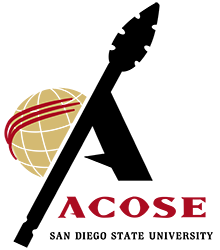
Sponsors
The SD and LA chapters would like to thank the Science of Laws Institute for their sponsorship of the 2023 1-Day Conference. The SOL Institute’s mission is to define the rationale and criteria for the expansion of science to encompass laws of government and the lawmaking process, and to correct the flaws and omissions of the traditional method of lawmaking and transform lawmaking into a knowledge industry. In 2022, the SOL Institute successfully expanded via the creation of a formal INCOSE Working Group (WG), named the Systems Engineering and Lawmaking (SELAW) WG. Please see their booth for more information, plus a free book!
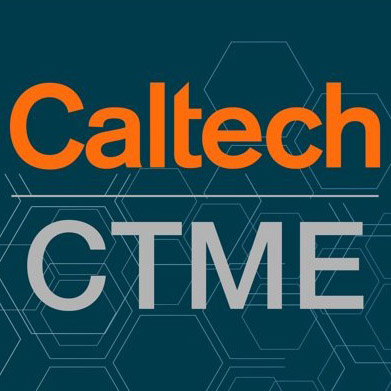
Caltech Center for Technology & Management Education (CTME) customizes unique learning experiences for organizations and their people, working one-on-one with leadership to design and deliver practical programs and certificate courses for teams and individuals. Caltech CTME offers individuals the best programs and courses through our rewarding, practical and economical approach to professional education. CTME also collaborates with companies to co-design cohesive learning and development programs that target change from senior executives and emerging leaders to the professionals and specialists who manage day-to-day execution. Starting with an understanding of the organization’s context and challenges, CTME aligns learning outcomes for the enterprise, the teams, and individuals.
Dassault Systèmes’ provide businesses and people with collaborative virtual environments to imagine sustainable innovations. By creating ‘virtual experience twins’ of the real world with our 3DEXPERIENCE platform and applications, our customers push the boundaries of innovation, learning and production. Dassault Systèmes’ 20,000 employees are bringing value to more than 270,000 customers of all sizes, in all industries, in more than 140 countries.
**********
Is your organization also interested in sponsoring opportunities? Please contact us at info@sdincose.org and communications@incose-la.org to discuss!
All Sponsors will receive:
Keynote – What a Systems Engineer Should Know About AI
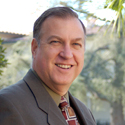
Rick Hefner, PhD
Bio:
Dr. Rick Hefner serves as the Executive Director for Caltech Technology and Management Education, where he provides professional education programs for technology-driven organizations and individuals. He has over 40 years of experience in systems engineering and has worked with over 30 companies in the aerospace, communications, electronics, and health sciences industries. Dr. Hefner is credited with over 200 presentations and publications, and is a past President of the INCOSE Los Angeles chapter.
Keynote Synopsis:
As the integration of Artificial Intelligence (AI) continues to reshape industries, including the emergence of ChatGPS, it becomes increasingly important for systems engineers to possess a foundational understanding of AI technologies and their implications. This presentation provides a comprehensive overview of the key concepts, challenges, and opportunities that AI brings to the world of systems engineering.
The presentation begins by elucidating the fundamental principles of AI, including machine learning, neural networks, and deep learning. It emphasizes the significance of data in training AI models and explores the spectrum of AI capabilities, from narrow to general intelligence. Recognizing the collaborative nature of systems engineering, the presentation delves into the interdisciplinary aspects of AI integration, shedding light on how systems engineers can effectively collaborate with data scientists and AI specialists to design, develop, and deploy AI-powered systems. Examples from current industry efforts are presented, and the presentation concludes with a discussion of how AI is changing the SE process.
This keynote will equip systems engineers with the knowledge they need to make informed decisions about AI integration within the systems they design and manage, fostering a harmonious synergy between traditional engineering principles and cutting-edge AI technologies.
Schedule
*The presentation slides are now available. Click the name of the presentation to download.
| Time | Title | Presenter(s) |
| 8:15 | Registration, vendors, lite breakfast | |
| 9:00 | Conference Welcome | Mr. Vincent Poteat, San Diego Chapter President Ms. Nazanin Sharifi, LA Chapter President |
| 9:10 | Introduction and Latest on SDSU’s ACOSE | Ms. Emilia Cadenasso, ACOSE President |
| 9:20 | Keynote Presentation – What a Systems Engineer Should Know About AI | Dr. Rick Hefner, Caltech |
| 10:00 – 10:10 | Break | |
| 10:10 – 10:50 Room A |
A Risk-Based Approach to Quantifying Systems Engineering Progress | Dr. John Wood, NIWC Pacific Dr. Glenn Tolentino, NIWC Pacific Dr. Jon Wade, UCSD Rick Gessner |
| 10:10 – 10:50 Room B |
Best Practices in Setting up Requirements Management Infrastructure (presentation download is forthcoming) |
Dr. Sri Harsha Maramraju |
| 10:50 – 11:30 Room A |
What a Systems Engineer Should Know About Digital Engineering | Dr. Rick Hefner, Caltech |
| 10:50 – 11:30 Room B |
From Vision to Reality: Building a Scientific Foundation for Future Engineering Efforts | Dr. John Wood, NIWC Pacific Dr. Glenn Tolentino, NIWC Pacific |
| 11:30 – 12:30 Room A |
Lunch | |
| 11:45 – 12:15 Room A |
Lunchtime bonus presentation – Restarting the Initiative for Mission Critical Items | Mark TenEyck, CATIA Brand |
| 12:30 – 1:10 Room A |
Coordinating Your Teams: A Matter of Perspective | Charley Patton, NGC |
| 12:30 – 1:10 Room B |
Designing and Teaching a Transdisciplinary Systems Engineering Toolkit | Stephen K. Guine, Caltech |
| 1:10 – 1:50 Room A |
Systems Engineering Workshop | Dr. John Wood, NIWC Pacific Dr. Glen Tolentino, NIWC Pacific |
| 1:10 – 1:50 Room B |
Appropriate Application of Three Systems Thinking Methods: Cognitive Thinking, Design Thinking, and System Dynamics | Dr. Julia Taylor, Taylor Success Systems |
| 1:50 – 2:05 | Break | |
| 2:05 – 2:45 Room A |
Sharing a New Vision of Lawmaking via a Concept of Operations Document | Dr. John Wood, Science of Laws David Schrunk MD, Science of Laws |
| 2:05 – 2:45 Room B |
Systems Thinking as a Competitive Advantage for Strategic Growth with Suppliers and Subcontractors | Dr. Kenneth L. Preston, Caltech |
| 2:45 – 3:25 Room A |
Risk Management 101 | Randall DeGering, LinQuest Corporation |
| 2:45 – 3:25 Room B |
System Effectiveness in the Acquisition and Sustainment Process (1958 – 2022) | Dr. Mike Green |
| 3:25 – 4 Room A |
Systems Thinking: Do We Know It When We See It? | Michael Martin |
| 3:25 – 4 Room B |
Are You a Competent Systems Engineer? | Dr. Rick Hefner, Caltech |
| 4:00 | End of conference |
Conference Presenters:
Dr. Rick Hefner
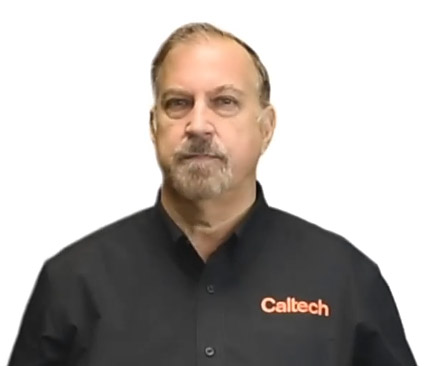
Dr. Rick Hefner serves as the Executive Director for Caltech Technology and Management Education, where he provides professional education programs for technology-driven organizations and individuals. He has over 40 years of experience in systems engineering and has worked with over 30 companies in the aerospace, communications, electronics, and health sciences industries. Dr. Hefner is credited with over 200 presentations and publications, and is a past President of the INCOSE Los Angeles chapter.
Dr. John Wood
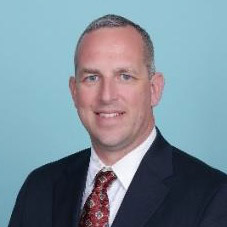
John Wood, PhD has spent his career pursuing perfection in areas where less-than-perfect performance can be deadly. For more than two decades he has applied his systems engineering expertise to improve performance, reduce costs, and save lives in healthcare, aviation, and defense. Dr. Wood holds a Bachelor of Science in electrical engineering from the U.S. Naval Academy and a Ph.D. in systems engineering from the George Washington University.
Dr. Glen Tolentino
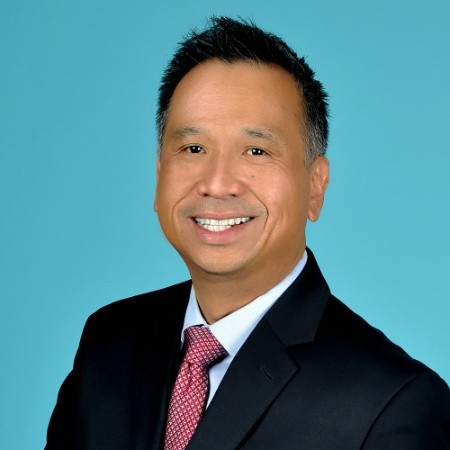
Glenn Tolentino, PhD has been an engineer, researcher, and innovator in the Command and Control (C2) and Enterprise Engineering competency throughout his career. He has been a major contributor in the design, development, and deployment of nationally recognized defense and intelligence systems. Glenn earned a BS in Applied Mathematics from San Diego State University. He also holds a MS in Software Engineering and a PhD in Computer Science from Southern Methodist University.
Dr. Mike Green
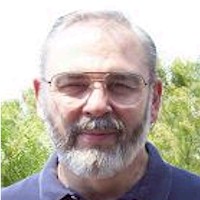
Dr. Green is a Senior Lecturer in the Systems Engineering Department at the Naval Postgraduate School. His research focuses on naval combat system architectures, model-based systems engineering, and product line architectures. He is a retired naval officer (submarines) with 18 years of related experience in the defense industry. Besides his PhD from Southern Methodist University, he holds an MBA and MS in Computer Science from the University of New Haven, an MA in International Relations from Salve Regina College, and a BS in Physics from Saginaw Valley State University. He is also a graduate of the Naval War College. Dr. Green is a Senior Member of IEEE and AIAA. He is also a member of the Military Operations Research Society (MORS); American Society of Naval Engineers (ASNE); Institute for Operations Research and Management Science (INFORMS); Association of Old Crows (AOC), and the International Council on Systems Engineering (INCOSE).
Dr. Jon Wade
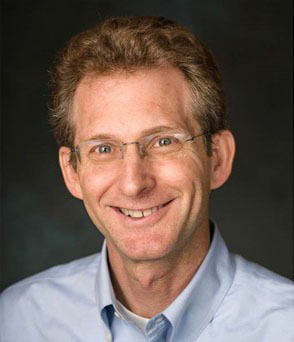
Jon Wade, PhD is a professor of practice at the Jacobs School of Engineering at the University of California, San Diego where he is the director of convergent systems engineering developing research and education to provide ethically sustainable solutions to critical, complex societal problems. Previously, Dr. Wade was the chief technology officer of the Systems Engineering Research Center, executive vice president of Engineering at International Game Technology, senior director of Enterprise Server Development at Sun Microsystems and director of Advanced System Development at Thinking Machines Corporation. Dr. Wade received his S.B., S.M., E.E. and Ph.D. degrees in electrical engineering and computer science from the Massachusetts Institute of Technology.
Dr. Julia Taylor
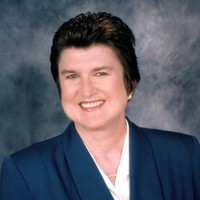
Early in her career Dr. Taylor worked in technical roles in a number of technology companies including Intel, Acurex and Buckman Laboratories. She then became interested in helping companies adapt to changing technologies and improving their approach to business and formed Taylor Success Systems consultancy to address this need.
Her background includes degrees in Chemistry and Electronics, plus an MBA in business and also a doctorate degree in Strategic Management. She has served as Director of Outreach for INCOSE International, the Systems Engineering organization, and is currently President-Elect for the San Diego Chapter of INCOSE. She represents the INCOSE local chapter on the San Diego County Engineering Council. She participates in IEEE and the American Chemical Society. She has written and presented a number of technical papers, as well as three business books. She currently works as a Management Consultant helping companies to diagnose problems and implement innovative new solutions. Her current emphasis is on systems approaches and using systems thinking to achieve long term business success.
Dr. Kenneth L. Preston
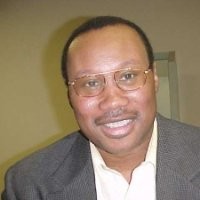
Dr. Kenneth L. Preston, DBA – is a Sr. Project Engineer, Project Manager, Systems Engineering Technical Lead Engineer (TLE), and Boeing Designated Expert (BDE) on the C-17 Program with 36+ years of aerospace and defense industry experience (over 30 years in Project Management and Systems Engineering). He worked on the Space Shuttle program in various technical and management positions for 20 years.
Dr. Preston serves as an Instructor for Caltech Technology and Management Education (CTME). Within the CTME department he teaches Systems Engineering Fundamentals, Aerospace Project Management, and Data Analytics. He also serves on the Cal State LA Industry Advisory Board (IAB) for Mechanical Engineering and Ambassador for the California State University (CSU) system/Faith-Based partnerships. He is a book author and has published several Systems Engineering Technical Papers. Dr. Preston is also an active charter member of Faith-Based Toastmasters for 28 months and currently serves as an Area Director. Ken is also a member of the INCOSE Los Angeles chapter. He has a Doctor of Business Administration (DBA), MBA, M.S. Physics and B.A. Physics, and holds a California Community College Lifetime Teaching Credential in Physics.
Dr. Sri Harsha Maramraju
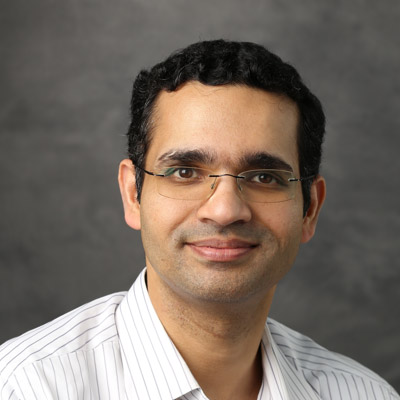
As an INCOSE Certified Systems Engineering Professional (CSEP), Dr. Sri Harsha Maramraju has a collective experience of over a decade in the Systems Engineering domain witnessing the life cycle (concept to launch) of novel medical systems and applying Systems Engineering principles in Class I, Class II and Class III medical devices. Sri Harsha has worked with customers and cross-functional teams to deploy several SE process improvement initiatives in medical device industries – in requirements management, V&V and product launches. He managed the installed base of PET/MR imaging systems while at GE Healthcare, supported design controls activities for the novel Surgical Robotics platform at Johnson & Johnson and led Systems Engineering team at Abbott Diagnostics. He currently holds a SE leadership position at Dexcom driving adoption of Systems Engineering across the division. Sri Harsha received his Ph.D. in Biomedical Engineering from Stony Brook University, NY. He is also a panel reviewer for INCOSE symposiums and a member of various working groups.
Mark TenEyck
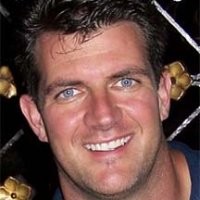
Mr. Mark TenEyck is an accomplished business executive with 30 years of experience in management, design, fabrication and building. He started his first business at the age of 19 in residential home building and design. He transitioned to an 18-year tenure with Dassault Systemes in management selling innovative engineering solutions. He also designs and buds custom modern warm furniture sold in high end retail stores, is on the Advisory Board at Cerritos College and teaches computer aided design (CATIA) at Roosevelt High School. TenEyck has championed innovative methods for reduction of cost, scrap and environmental impact in product development. He is distinguished by his passion for business, focus on collaborative team building and commitment to delivering results. His contagious enthusiasm instills him and his team members with extraordinary energy and dedication in an environment where creativity and innovation are encouraged. A dynamic public speaker, teacher and mentor, Mark is a sought after presenter at meetings, team building events and conferences. He transmits key concepts in business innovation supported by smart adoption of technology to enable business to continually improve their products and processes while reducing their overall costs. Mark is passionate about his work and enjoys encouraging others to experience the dynamic of design and fabrication. He donates his time teaching in Boyle Heights and mentoring First Robotics Teams.
Rick Gessner
Mr. Rick Gessner is a successful serial entrepreneur with over two decades of experience creating great technology product companies in California. In 1995, Rick co-founded DigitalStyle, and created Gecko — a revolutionary browser platform acquired by Netscape and productized as the Firefox browser. The Gecko platform produced numerous patents, and served as the basis for the modern model for internet browsers with support for XML, CSS, XUL, dynamic HTML and more. Rick holds several internet-related patents. Rick served as Entrepreneur in Residence at Maveron, a Seattle VC firm found by Starbucks CEO Howard Schultz. Soon after, Rick was the 5th employee at a startup called Bridgepoint Education, now a publicly traded for-profit online education company, where he served as Chief Technology Officer from 2004-2010. Bridgepoint grew from 23 students at its founding, to more than 80,000 online students. At Empowered Education, Rick was hired as Chief Architect, helping to develop a world-class social learning platform. He was promoted to Chief Innovation Officer, where he was responsible for the ensuring that Empowered products retain the cutting edge necessary to provide customers with a fulfilling, engaging and delightful experience. Empowered Ed. was acquired in 2016 by Qualcomm. For the last few years, Rick has been a lecturer and Professor of Practice in the UCSD Electrical and Computer Engineering department at UCSD.
Michael Martin
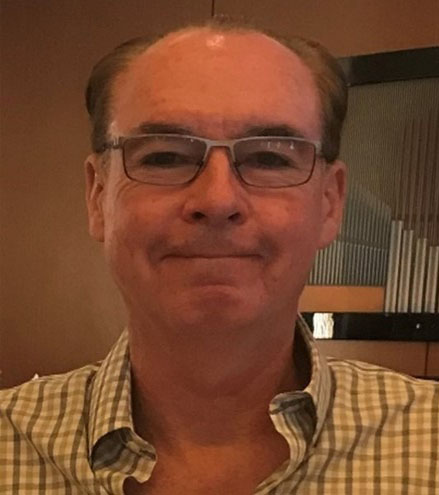
Mr. Michael Martin, PE, PMP, recently retired from his career as a technical project manager and systems engineer. He is currently a member of the team at the San Diego Chapter working to establish the Science of Laws working group. He continues following his new interests in the application of systems principles to human social systems based in public policy, law, and governance.
David Schrunk, MD
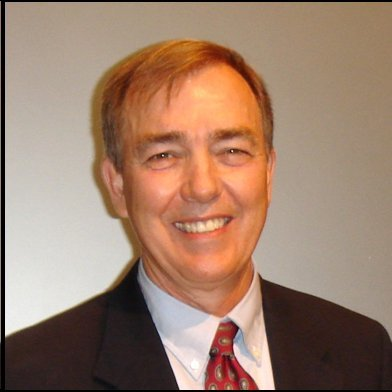
Mr. David G. Schrunk, MD is an aerospace engineer and medical doctor. He is the founder and president of The Science of Laws Institute of Poway, California, and is the author of the book, THE END OF CHAOS: Quality Laws and the Ascendancy of Democracy.
Randall DeGering
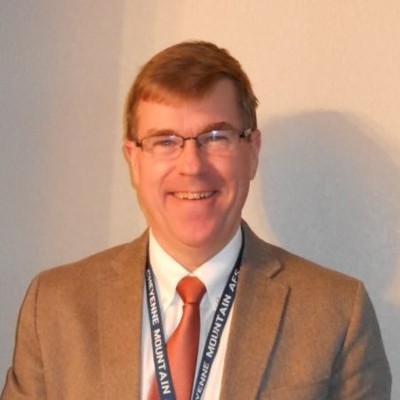
Mr. Randall DeGering Program Risk Manager at LinQuest Corporation in Los Angeles, CA. His background includes USAF officer experience in air defense and HQ planning. He is a former ICBM launch crewmember and AWACS Air Battle Manager. He is also obtaining a PhD in systems engineering.
Stephen K. Guine
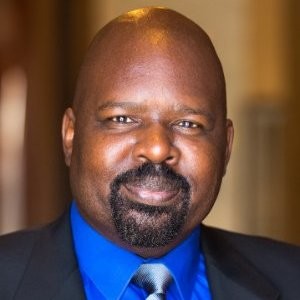
Mr. Stephen Guine is a President Emeritus and current Vice-President of INCOSE-LA and the president of The San Fernando Valley Engineers’ Council, as well as a Senior Staff Systems Engineer for the Northrop Grumman Corporation.
Charley Patton
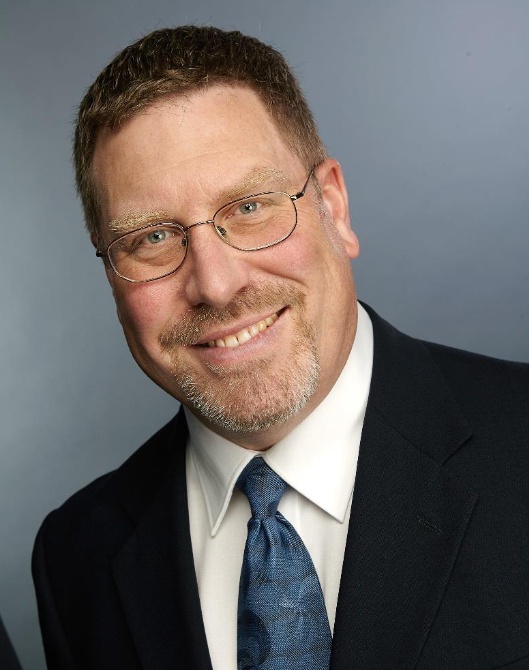
Mr. Charley Patton, CSEP, is a systems engineering lead for Northrop Grumman, which he joined in 2004. He has a B.S. in Electrical Engineering and Computer Science from the University of Colorado, Boulder, an M.S. in Business Administration from SDSU, and several certificates, including a Systems Engineering certificate from UCSD and a Model-Based Systems Engineering certificate from Caltech. Mr. Patton transitioned from software engineering to systems engineering the old-fashioned way – one day, his boss volunteered him to go derive the system requirements. From this first excursion into systems engineering, he learned increasingly disciplined methods for identifying and documenting requirements and architectures; planned and executed system test and deployment activities; was a functional manager for 3 years; and even managed a hardware development and production team for a year. Today he splits his time performing systems engineering lead functions, executing technical systems engineering tasks, and trying to get his doxie cairn to understand the difference between ConOps and OpsCon.
Synopses:
What a Systems Engineer Should Know About AI
Dr. Rick Hefner
As the integration of Artificial Intelligence (AI) continues to reshape industries, it becomes increasingly important for systems engineers to possess a foundational understanding of AI technologies and their implications. This presentation provides a comprehensive overview of the key concepts, challenges, and opportunities that AI brings to the world of systems engineering.
The presentation begins by elucidating the fundamental principles of AI, including machine learning, neural networks, and deep learning. It emphasizes the significance of data in training AI models and explores the spectrum of AI capabilities, from narrow to general intelligence. Recognizing the collaborative nature of systems engineering, the presentation delves into the interdisciplinary aspects of AI integration, shedding light on how systems engineers can effectively collaborate with data scientists and AI specialists to design, develop, and deploy AI-powered systems. Examples from current industry efforts are presented, and the presentation concludes with a discussion of how AI is changing the SE process.
This session equips systems engineers with the knowledge they need to make informed decisions about AI integration within the systems they design and manage, fostering a harmonious synergy between traditional engineering principles and cutting-edge AI technologies.
A Risk-Based Approach to Quantifying Systems Engineering Progress
John Wood, Glenn Tolentino, Jon Wade, and Rick Gessner
How can one discern which systems engineering approach and/or toolset is most effective? That is the question we asked ourselves as part of the collaboration of Naval Information Warfare Center Pacific and University of California, San Diego focused on improving systems engineering approaches. Intrinsically, we knew systems engineering effectiveness was a factor of both quality and speed. Speed is easy to measure, but how does one know if an approach to going faster affects the quality of systems engineering? As our conversation continued, one person remarked that when systems engineering is done well, no one notices; however, when systems engineering is lacking, crisis after crisis emerge. Then, we had our “Eureka!” moment: Systems engineering is a risk reduction activity and, therefore, systems engineering progress can be measured via reduction in risk.
The presenters will describe how they incorporated aspects of IEEE Standard 15288 “Systems and software engineering–System life cycle processes” and Military Standard 498 “Military Standard Software Development and Documentation” to quantify the major risks addressed via the systems engineering process. They will also show how this approach not only allows projects to measure systems engineering progress but also enables a new, risk-informed approach to performing systems engineering. The presenters will conclude with a short demonstration of the Excel-based tool they built to help project teams measure their systems engineering progress and identify areas requiring additional systems engineering rigor.
Best Practices in Setting up Requirements Management infrastructure
Dr. Sri Harsha
As the product line expands in a mid-size medical device company, there are not only technical challenges, but many process related challenges that need addressing. Complying with key regulations and standards is a major part of entering the market for any medical device industry. Therefore, it is important to lay out a holistic view of Design Controls starting with Requirements Management and using a toolset that will enable and streamline the envisioned infrastructure to support not only regulatory submissions, but also managing and maintaining the data in a reliable ecosystem. This presentation walks us through the challenges in a project with missing traces, error-prone requirement management setup and how it can be rectified by following the best practices with thorough evaluation of the current structures and implementation.
What a Systems Engineer Should Know About Digital Engineering
Rick Hefner, PhD
In an era defined by digital transformation, the landscape of systems engineering is undergoing a profound shift with the advent of Digital Engineering (DE). This conference will equip systems engineers with a comprehensive understanding of DE, elucidating its core principles, methodologies, and implications for modern engineering practices.
The presentation starts by demystifying the essence of Digital Engineering, detailing how it transcends traditional boundaries by fostering collaboration, integration, and efficiency across the engineering lifecycle. It delves into the fundamental tenets of DE, including model-based systems engineering (MBSE), virtual prototyping, and systems simulation. By emphasizing the central role of digital models as the backbone of DE, the presentation underscores how these models enable a holistic representation of complex systems, enabling engineers to simulate, visualize, and optimize system behavior with unprecedented accuracy.
The presentation provides examples of the applications of DE, showing how DE streamlines communication among multidisciplinary teams, accelerates innovation, and enhances decision-making by providing a unified platform for information exchange. Addressing potential challenges, the session also discusses the transition from legacy systems to DE, emphasizing strategies to mitigate resistance to change and ensure a smooth integration process.
Ultimately, this presentation empowers systems engineers with the knowledge and insights required to harness the full potential of Digital Engineering. By bridging the gap between traditional engineering practices and digital methodologies, systems engineers can adapt and thrive in a rapidly evolving landscape, fostering the creation of more resilient, efficient, and innovative systems.
From Vision to Reality – Building a Scientific Foundation for Future Engineering Efforts
John Wood, PhD and Glenn Tolentino, PhD
While actively creating new products, engineering teams often have little time for researching new technologies. Likewise, while actively researching new technologies, scientific teams are often unaware of particular use cases. To help bridge this gap, the Command & Control and Enterprise Engineering Department at Naval Information Warfare Center (NIWC) Pacific created a new full-time position titled Chief Scientist.
This presentation will discuss how the Department Chief Scientist and Department Lead Systems Engineer teamed up to create a vision workshop that helps engineering teams look into the future and forecast not only the needs of their end users but also the skillsets, knowledge, and facilities needed to create future products. The authors will highlight the phases and outputs of the vision workshop, methods used to prepare the participants’ mindsets for boundless thinking, the validation approaches performed on the workshop products, and how the workshop products were used to influence scientific research within NIWC Pacific, industry, and academia.
Coordinating Your Teams: A Matter of Perspective
Charley Patton
The bigger the system development effort, the bigger the team, and the greater the opportunities for miscommunication. Model-Based Engineering is supposed to address this communication issue, among others, but do you and your engineering staff understand how to use MBE and the associated tools to create artifacts that actually solve the problem? In this presentation, Charley Patton will discuss solutions that address the needs of disparate developers so everyone knows what you’re talking about.
Designing and Teaching a Transdisciplinary Systems Engineering Toolkit
Stephen K. Guine, MPP, MBA, CSEP+Acq
Systems Engineering has always required its best practitioners to be Systems Thinkers and be able to perform in Interdisciplinary environments, such as Agile Scrums and Integrated Product Teams, MBx, Digital Engineering, etc. But as we know, the fast pace of technological and societal change has only quickened, shortening the product timelines between need identification and low-rate production.
This implies that the successful SE is not simply aware of the domains, processes, and toolsets of their teammates. Success now requires that the SE’s toolkit enables them to have basic competency in multiple tools and environments, thereby becoming an agent of acceleration, as opposed to its hapless victim.
In this presentation, I will present some patterns that I believe SE’s will find effective when attempting to ascertain which classes of tools may be useful, how deep or shallow their knowledge needs to be for effectiveness, and what use cases drive this process.
The Systems Engineering Workshop
John Wood, PhD and Glenn Tolentino, PhD
Abstract: The authors were asked to provide a one-hour module on systems engineering as part of a three-day project manager boot camp at Naval Information Warfare Center Pacific. While the authors have previously designed and taught a three-day systems engineering boot camp and a one-day systems engineering essentials course, the thought of further reducing the content was daunting. However, the authors knew from their previous courses that the bulk of students’ learning comes from their participation in systems engineering themed exercises rather than lectures. So, they built the module around a systems engineering exercise that addressed the key technical processes in a manner that the attending project managers could rapidly perform.
During this presentation, the authors will describe the goals of the new systems engineering module, approaches considered, and curriculum differences between this short systems engineering introduction, the existing one-day systems engineering essentials course, and the existing three-day systems engineering boot camp. The authors will also share the core instruction material, an exercise worksheet used during the module, feedback from students, and lessons learned.
Appropriate Application of Three Systems Thinking Methods: Cognitive Thinking, Design Thinking, and System Dynamics
Dr. Julia Taylor
Download Paper here.
Systems Thinking is big picture thinking. However, there are many different ways of taking the big picture into account. This study includes a discussion about the type of context(s) that are the best fit for each of these three Systems Thinking Approaches. It also will examine the pros and cons of each of these methods, and describe situations/ settings where each method is useful.
In order for Systems Thinking to be as useful as possible, it must be applied properly. This presentation will help participants to understand these three methods, identify when to apply each one, and broaden their comprehension of the value of nuances when using Systems Thinking.
Sharing a New Vision of Lawmaking via a Concept of Operations Document
John Wood, PhD and David Schrunk, MD
As part of the INCOSE Systems Engineering and Lawmaking (SELAW) Working Group, the authors sought a way to share their big-picture vision of a science-directed lawmaking ecosystem. This ecosystem includes the interaction of elected officials, legislative staff, special interest groups, industry representatives, general public, scientific observers, engineers, education systems, accrediting bodies, etc. that directly or indirectly support the creation, scientific validation, modification, and retirement of laws and bodies of laws. The format settled upon was the IEEE Standard 1362 Concept of Operations (CONOPS) document. This presentation will follow the flow of the CONOPS as defined by the IEEE standard, detailing the current system, justification for and nature of changes, concepts for the proposed system, operational scenarios, and summary of impacts.
Systems Thinking as a Competitive Advantage for Strategic Growth with Suppliers and Subcontractors
Dr. Kenneth L. Preston
Download Paper here.
A system’s behavior can be understood in the context of relationships among its components, other systems, and resources. Major Aerospace & Defense Contractors use systems thinking as a way of understanding complex systems engineering design type situations by looking at them as combinations of systems. Contractors have outsourced portions/all their design practices to suppliers and subcontractors. This allows contractors to streamline costs, take advantage of new technological advancements, reserve company personnel, and obtain cost-efficient and innovative solutions. The presentation will look at the competitive advantages for extending systems thinking to suppliers from the design strategy, affordability, knowledge transfer, safety, quality, and future business perspectives.
Systems thinking mindsets between customers, contractors and suppliers are expected to effectively dissect, evaluate, analyze, and respond to substantial amounts of potential design solutions, analyses, evaluations, modeling, and assumptions made in procuring a design. These processes and concepts are possible through the ability of suppliers and subcontractors to utilize systems thinking tools to build upon their skilled labor effectively and maintain and enhance their technical efficiency in identifying a strong competitive strategic process. Systems thinking allows for excellent decision-making when addressing information in systems engineering, large and complex proposals, and solutions, managing, and determining value, while meeting the conditions required for being an extension of their contractor(s). It also satisfies the need behind the importance of dealing with analytics within systems engineering for processes used by their customers to make key technical, marketing, and business decisions, and enhance relationships. Success in achieving a system thinking mindset by subcontractors/suppliers can build a supportive technical environment that inspires excellence in everything done while satisfying successful and productive products and relationships (Service Excellence Team, www.montana.edu).
We will present a process initiative for displaying Strategic Growth with Suppliers and Subcontractors of successful systems using these systems thinking mindsets. The focus will account for demonstrating effective technical coordination through Technical Design Reviews (TDR) with contractors and customers and building a strong cultural bond between systems engineering and customers organizations. Systems Thinking is critical to the success of the overall strategic growth of any contractor, subcontractor/supplier relationship with respect to overall technical competitiveness in systems engineering. A robust system thinking process can enhance technical influences in strategic profiles upon the vision and value of all stakeholders.
Risk Management 101
Randall DeGering, CSEP
Risks can come from various sources: Project failures (at any life-cycle phase in design, development, production, or sustaining), financial changes, accidents, natural disasters, events of uncertain or unpredictable cause, or deliberate attacks from an adversary. This presentation will discuss the SE risk management process.
Systems Effectiveness in the Acquisition and Sustainment Process (1958-2022)
John M. Green, PhD
This presentation describes the results of a multiyear study of over 700 system effectiveness related documents with the goal of assessing the impact of system effectiveness on systems acquisition and sustainment The literature was the primary evidence, and the study used grounded theory to assess patterns and trends in the literature. The study found that system effectiveness was a driving force in the early days of the application of the acquisition paradigm. However. the evidence is clear that over time, system effectiveness fell into disuse. The overall conclusion was that overtime changes in people and the culture of acquisition resulted in the observed changes. Some reasons for the change are that system effectiveness failed to become a widely used concept; The Defense Acquisition University uses incorrect definitions of system effectiveness; there was a shift in emphasis from system effectiveness to reliability and sustainment; and, finally, the rise of system engineering as a discipline led to the demise of system effectiveness as a concept by which to evaluate systems. The study concluded that system effectiveness is still a viable concept worthy of inclusion as a part of system engineering.
Systems Thinking – Do We Know It When We See It?
Michael Martin
Peter Senge suggests that “In effect, the art of systems thinking lies in seeing through the detail complexity to the underlying structures generating change.” As systems engineers, we understand the challenge of addressing complexity in designing and reifying high-technology systems. Systems engineering thus encompasses a set of disciplines intended to assess user needs and model systems-of-interest that can produce products meeting those needs. We most often do this though technology advancement to provide higher performance to existing products or to derivative applications. In such cases, legacy underlying structures at the higher architectural levels generally suffice and we don’t give a lot of thought to reevaluating them.
When we do address the underlying structures of a class of systems, it is likely that the new needs and applications are disruptive to current thinking. In such cases, we may wish to consider concepts such as transitionability, extensibility, and novelty to better understand the impact to existing underlying structures before we can begin to engineer the disruptive products. Updated structural change processes will be critical to addressing the INCOSE Vision 2035 challenges in fields such as power & energy, transportation, information, healthcare, and telecommunications systems where societal demands will necessitate modification of top-level underlying structures and reconsideration of existing organizational/stakeholder landscapes. This presentation will discuss examples of systems and underlying structures impacted by varying degrees of structural change.
Are You a Competent Systems Engineer?
Dr. Rick Hefner
As the field of Systems Engineering (SE) continues to evolve, the question of what constitutes a competent systems engineer becomes increasingly pertinent. This presentation explores the notion of competence in SE through the lens of the INCOSE Competency Framework and similar models. By delving into the key dimensions and associated skills, the presentation assesses the current landscape of systems engineering competence and presents personal and organizational strategies for gaining and maintaining SE competence.
The INCOSE Competency Framework is organized in five competency areas: Core, Professional, Management, Technical, and Integration. Each dimension encapsulates a diverse array of skills and knowledge required of modern systems engineers. The session will discuss each area and present strategies for acquiring the needed skills as an individual engineer. Furthermore, the presentation will explore how emerging technologies like Artificial Intelligence, Data Analytics, and Model-Based Systems Engineering are reshaping traditional engineering practices and subsequently influencing the required competencies. The presentation will conclude with actions an organization should take to maintain a competent workforce.
The presentation will offer practical guidance on how attendees can enhance their competence as systems engineers. By understanding the dimensions of competence and the associated skills, attendees can identify areas for improvement and develop targeted plans for professional development. This guidance can range from acquiring new technical skills to improving leadership and interpersonal abilities, empowering attendees to take actionable steps toward becoming more competent systems engineers.
62 signed up so far. Limit: 90.
Event date is past
